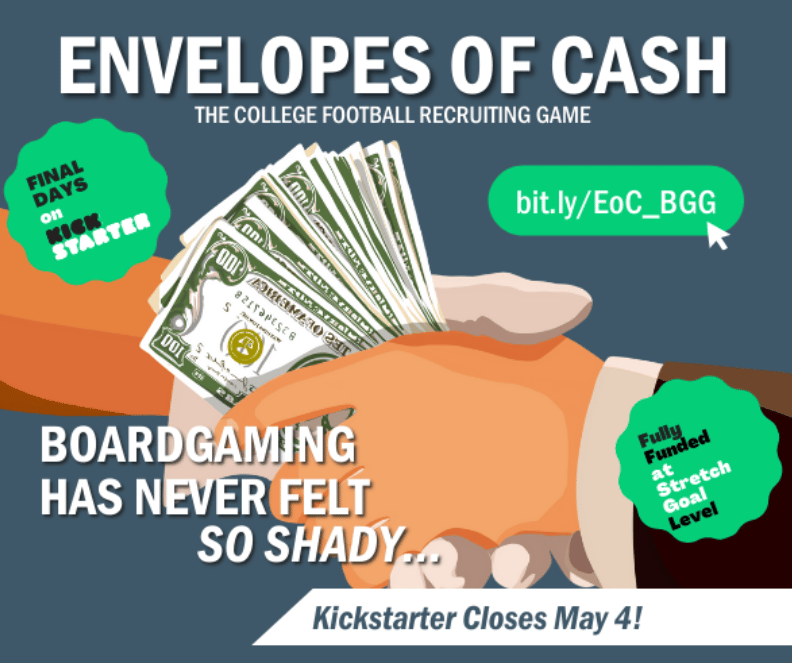Good morning, and thanks for spending part of your day with Extra Points.
Over the weekend, Notre Dame AD Jack Swarbrick sat down for an extensive interview with Pat Forde of SI, touching on the expansion of the CFP, the NCAA transformation committee, NIL, and the general future of college sports as we know it. Swarbrick is one of the longest-tenured, most connected and most influential ADs in the industry, as well as somebody unafraid to occasionally speak candidly. The entire story is worth your time.
This particular passage caught the attention of my particular corner of the internet:
Notre Dame athletic director Jack Swarbrick toldSports Illustratedthat he believes the breakup of college sports at the NCAA Division I level is “inevitable,” and puts a potential target date on that seismic change as the mid-2030s. Swarbrick also said there are “so many” schools trying to leave their current conferences, but they’re handcuffed by existing contracts.
But reading the entire story, I think, paints a slightly more nuanced prediction than the standard sports-radio fare type "IS A SUPER LEAGUE COMING WHERE THE P5 JUST BREAK AWAY FROM THE NCAA?!?"
The idea that some sort of D-I breakup is coming is not, in my experience, super controversial in this industry
It is, after all, one of the major reasons we have a Transformation Committee to begin with. I've talked to ADs, conference leaders, and industry leaders for the last two years, and regularly I hear these folks complaining that D-I has become too large, and more importantly, too disparate, to effectively manage.
This is not a new concern in college sports. I think back a lot to this passage from Keith Dunnavant's outstanding book on TV and college football, The Fifty-Year Seduction. Here, recalling various cost-saving mechanisms the NCAA employed in the early 1970s, he points to Texas head football coach Darrell Royal, who grumbled "I don't want Hofstra telling Texas how to play football."
Nowadays, Hofstra doesn't even play football, and schools like Texas, thanks to P5 autonomy, have more flexibility to decide how they want to structure their athletic departments than ever before. But autonomy conferences don't completely exist outside of the NCAA structure, and the gap between a successful mid-major program, and one near the bottom of D-I, can still be massive.
It is difficult to generate national movement on almost anything when the differences among D-I schools is so vast. Differences in budgets, in missions, in enrollment strategies, in political pressures, in populations served...everything.
It isn't too hard to find an AD that looks at all of this and wonders how sustainable all of it can be, even without NIL, or the Portal, or looming legal challenges to amatuerism, or anything else. This is a bloated system even before it faced existential threats.
I don't anticipate wholesale breakup of D-I in the next few years, but I do expect a major goal of the Transformation Committee, and subsequent other legislation, will be to redefine what it means to be a D-I institution, in order to produce a greater sense of clarity of purpose among membership. That will probably lead to some reshuffling.
But, if I am reading this correctly, Swarbrick is predicting a different time of breakup, one driven more by TV revenues
Consider the following passages here:
{Swarbrick} said the fracture lines within the 130-member FBS could leave two disparate approaches: schools that still operate athletics within a traditional educational structure, and those who tie sports to the university in name only.
“There’s always been sort of a spectrum—and I want to stress that everything along the spectrum is valid; it’s not a criticism,” Swarbrick said. “On one end of the spectrum, you license the school name and run an independent business that’s engaged in sports. The other end of the spectrum, you’re integrated into the university in terms of decision making and requirements, and some follow that.
“I think both can produce great athletic competition. But it’s really hard to get there given the contractual obligations that already exist.”
The idea that schools, as a way to continue college sports in a world where courts strike down amatuerism, could license their IP to a pro entity, isn't entirely new. I read about this in Ohio University's B.David Ridpath's Alternative Models of Sports Development in America: Solutions to a Crisis in Education and Public Health. It's been out there in some reformist circles for several years and it's one legitimately possible idea in the distant future.
I think Swarbrick is also correct in that not every P5 school is guaranteed to want to follow that path, for either financial or ideological reasons.
The sorting mechanism that he describes here? P5 TV contracts.
“We’re going to have these two conferences that have so distanced themselves from anyone else financially,” Swarbrick said. “That’s where I see it starting to break down. There are so many schools trying to get out of their current conference, and they can’t get there.
”Asked which schools could be looking to move, Swarbrick answered, “None that I’d share.”
Swarbrick is certainly not alone in predicting conference revenue from the SEC and Big Ten to dramatically outstrip that of everybody else in the next decade. The Big Ten, fresh off selling an extra portion of BTN to Fox, will soon finalize a new TV contract that may very well lead to schools getting very close to $100 million a YEAR by the end of the decade. The SEC could potentially surpass even that, once Texas and Oklahoma formally join. By 2029, it's not impossible that the SEC and Big Ten will distribute more than $30 million more, per school, than anybody in the Pac-12, ACC, or Big 12.
Could this happen? Sure. But I have a hard time believing it is INEVITABLE. At least, not like this.
I don't doubt that some schools, perhaps in the ACC or Pac-12, have looked at the same charts that we have, and talked about how maybe things would be much easier if they could finagle a way into the Big Ten or SEC.
I also understand the logic behind assuming the next massive realignment wave happens in the mid 2030s. That'll be when the long-term SEC and ACC ESPN contracts end, and it is unlikely that the Big Ten, Pac-12 or Big 12 would sign broadcast agreement that extend far beyond 2033. Could one of the big leagues take another swing at kneecapping one of the other three? Sure.
That's not outlandish message board fever dream. But I don't think that's a guarantee for a couple of big reasons.
We don't know exactly who is making decisions in the mid 2030s
It's possible that every power conference has the same commissioner in 2033 that they do in 2023, even if I'm a little skeptical. But there is no way the major schools will have the same presidents in 2033 that they do now. That job has become even more political, more challenging, and with shorter turnaround times than ever before, to say nothing of the incentives pushing some ADs (and even coaches) out of the profession.
That's a really important distinction, because it is the university presidents that hire and direct conference commissioners, make conference realignment decisions, and shape structural policy. With so much upheaval among the folks who would actually need to sign off on this stuff, I think it's hard to guarantee almost anything. I know that's a lousy sports radio answer, but I believe it's the honest truth.
I'm also not completely convinced that sheer topline TV revenue alone is the make or break issue that force P5 consolidation, or jettison schools that have shared conference membership for 80+ years. At some point, it simply isn't the only important variable! A current Big Ten team hasn't won a women's basketball title since 1999. A men's team hasn't done it since 2000. Shoot, this year, the mighty and rich SEC and Big Ten combined to send exactly zero teams to the Final Four. A non-Ohio State Big Ten team hasn't won a football national title since 1997.
Your league can win lots of national titles, even while rival colleges make more TV money! All you need is enough money. And every power conference league makes enough money to compete right now. If all you needed was money, TEXAS IS BACK wouldn't be a delightful meme.
There is so, SO much uncertainty in college sports right now, I feel like it's impossible to make virtually any declariative statement about anything that might happen a decade from now
I realize this might sound like a trite observation, but I swear it's the truth. Nobody really knows when, or how, the court system will force additional dramatic changes to the college sports model. Nobody really knows when, or how, or honestly, even IF, markets around NIL or player transfers will correct or stabilize. Nobody really knows when, or even if, athletes will attempt to unionize again. We don't know if consumers behavior will change enough to disrupt conventional wisdom about broadcast rights.
I think thoughtful and informed stakeholders can make a few pretty educated guesses, but with so many of the basic assumptions that hold up the college sports status quo under attack, and with so much attrition happening among the decisionmakers in that world...and shoot, with so much institutional upheaval happening in our political system, economy, higher education, etc...I don't feel like I can sit here and say, yeah, I think D-I is gonna break apart in 2032.
It might! It's probably going to change somehow in the next few years. And I promise to do my very best to understand how and why and when it might change.
But I don't know if I can sign on to inevitable. There are still so, so many moving parts, so many unknowns, so many things changing so quickly.
I feel pretty good when I know what I'm going to write about on Thursday. If I figure out what's going down in 2030, I'm hiking the price of this thing.
This newsletter was brought to you in part by Envelopes of Cash:

Envelopes of Cash is a Euro board game with a very American theme: college football recruiting. Players take the roles of Head Coaches, trying to sign the best recruiting class. To do so they must marshal all the tools available to them, including the eponymous envelopes full of cash and other impermissible payments, donations from boosters, and marketing campaigns, all to maximize their Recruiting Ranking Points.
The game’s Kickstarter campaign has been a huge success, with a stretch goal unlocked and closing in on 200% of their funding goal, but you only have about a week left to get on the bandwagon before it’s too late to become a Kickstarter backer or to buy up one of the remaining opportunities to become the face of one of the game’s cards, like the Tech Bro Millionaire or the Coach with Iowa Roots. The campaign closes on May 4, so head to the Kickstarter today!
This newsletter is brought to you, in part, by Skyway Interactive.

How do you get the top recruits to check out your campus and athletic facilities? Easy, just bring the tour to them!
Skyway Interactive allows teams, athletic departments, and entire universities to produce cutting-edge virtual tours. We send you the 360-degree camera and let you capture the shots on your own schedule. Upload the images and we do the rest.
Check out our work from some of the biggest names in college sports and learn more about our virtual tours at www.SkywayInteractive.com.
To sponsor a future Extra Points newsletter, please email [email protected]. For article ideas, newsletter feedback, FOIA tips, athlete NIL sponsorships and more, I'm at [email protected], or @MattBrownEP on Twitter, and @ExtraPointsMB on Instagram.

















